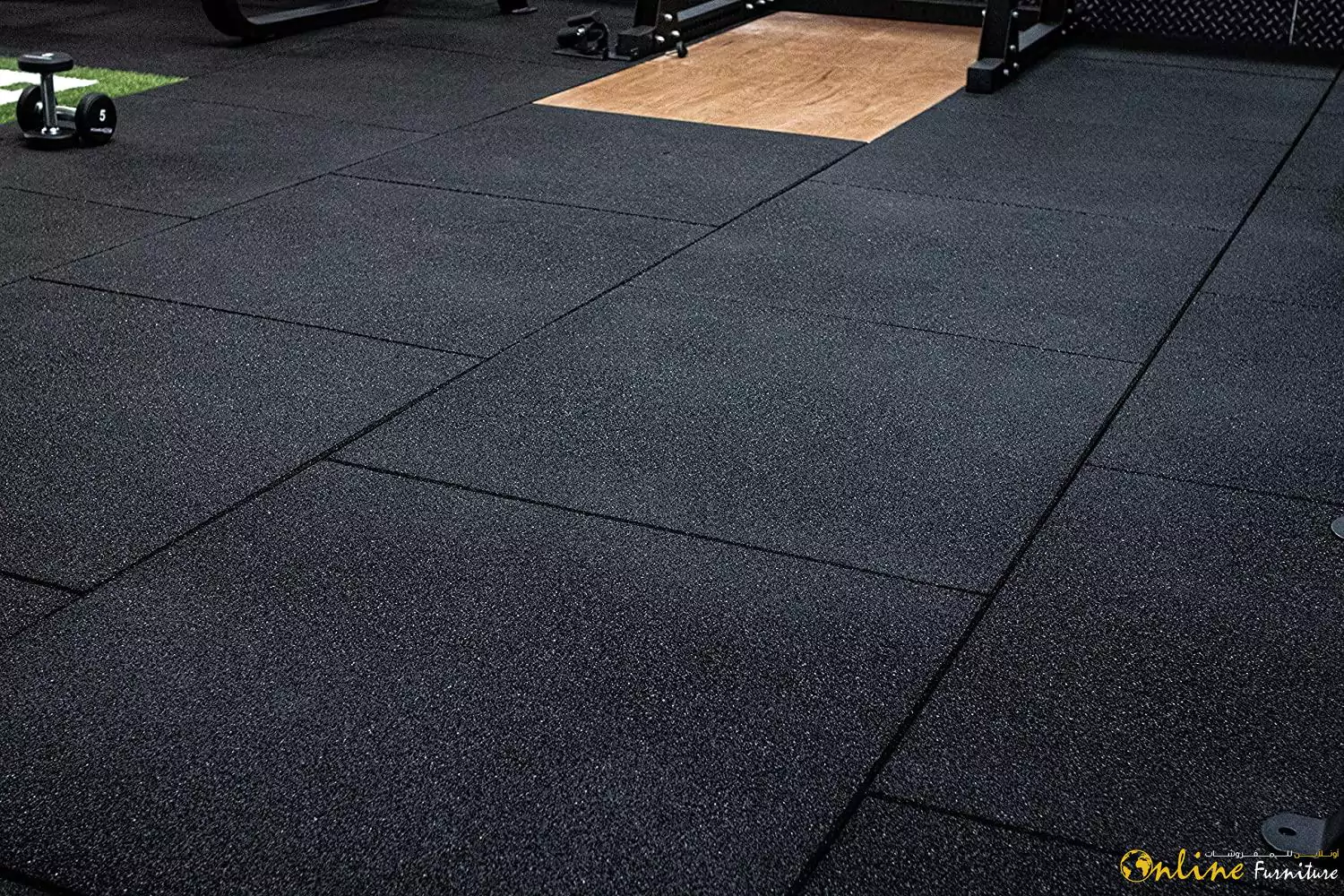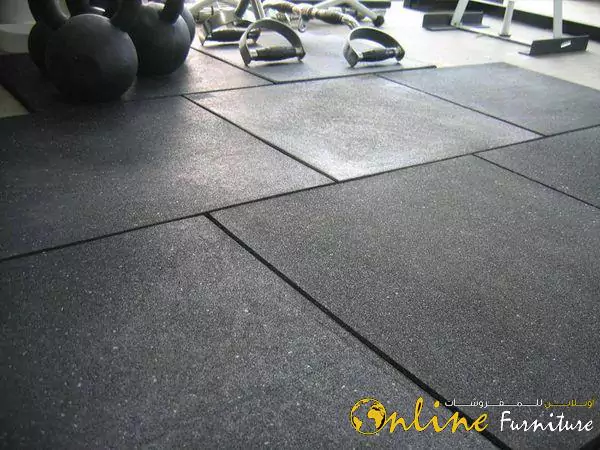Home / GYM Flooring
Step Up Your Fitness Game: Discover the Ultimate Gym Flooring Solutions!

Elevate your fitness journey with our premium selection of rubber gym flooring, designed to enhance your home or commercial gym space. Whether you’re a seasoned athlete or just starting your fitness regimen, investing in the right flooring is crucial for optimizing performance, safety, and durability.
Our rubber gym flooring solutions offer unmatched versatility, providing the perfect foundation for any workout routine. Engineered with high-quality materials, our products are built to withstand the rigors of even the most intense workouts, protecting your floors from damage and reducing noise and vibration. From heavy lifting to cardio sessions, our flooring delivers exceptional shock absorption and traction, ensuring a stable and secure footing every time.
Transform your home gym into a professional-grade fitness oasis with our wide range of options, including interlocking tiles, rolls, and mats. With easy installation and maintenance, you can focus on what matters most—achieving your fitness goals. Say goodbye to cracked concrete and slippery surfaces, and hello to the best gym flooring solutions on the market.
Dive into Diversity: Exploring the Dynamic World of Gym Flooring Options!
- Rubber Gym Flooring: Durable and versatile, ideal for high-traffic areas and heavy equipment zones.
- Foam Gym Flooring: Lightweight and shock-absorbent, perfect for cushioning exercises like yoga and Pilates.
- Interlocking Tiles: Easy to install and customize, providing a seamless and secure fit for any gym space.
- Vinyl Gym Flooring: Waterproof and easy to clean, suitable for multi-purpose gym areas and high-moisture environments.
- Carpet Tiles: Provides comfort and insulation, great for cardio and stretching areas in both home and commercial gyms.
- Wood Gym Flooring: Offers a classic and elegant look, ideal for dance studios and multipurpose fitness rooms.
- Artificial Turf: Mimics the feel of outdoor surfaces, perfect for functional training and agility exercises.

Choosing the Perfect Gym Flooring: Essential Considerations for Your Fitness Space

- Durability: Opt for flooring that can withstand heavy equipment and high-impact activities without wearing down quickly.
- Shock Absorption: Look for flooring with adequate cushioning to reduce the risk of injury and protect your joints during intense workouts.
- Traction: Ensure the flooring offers a non-slip surface to prevent accidents, especially in areas prone to moisture or sweat.
- Ease of Maintenance: Choose flooring that is easy to clean and maintain to keep your gym space hygienic and looking its best.
- Noise Reduction: Consider flooring materials that dampen sound to minimize noise disturbance, particularly in shared or residential spaces.
- Installation: Assess whether the flooring is easy to install, whether you’re opting for interlocking tiles, rolls, or mats, to save time and effort.
- Cost: Balance quality with budget considerations to find the most cost-effective flooring solution for your fitness space.
- Aesthetics: Select flooring that complements the overall design and ambiance of your gym, creating a visually appealing environment.
- Eco-Friendly Options: Explore environmentally friendly flooring materials, such as recycled rubber or sustainable wood, to minimize your carbon footprint.
- Warranty and Guarantee: Check for warranties or guarantees offered by manufacturers to ensure long-term satisfaction and peace of mind with your flooring investment.
Why Choose Us?
Quality Materials: We source only the highest quality materials for our gym flooring products. Our flooring is designed to withstand heavy foot traffic, equipment weight, and the rigors of intense workouts, ensuring durability and longevity.
Customization Options: Every gym is unique, and we offer a wide range of customization options to meet your specific needs. From different colors and patterns to thickness and material choices, we provide flexibility to create the perfect flooring solution for your space.
Expert Installation: Our team of experienced professionals ensures that your gym flooring is installed correctly and efficiently. We take care of every detail, from surface preparation to the final touches, guaranteeing a flawless finish.
Safety and Comfort: Safety is paramount in any gym environment. Our flooring options prioritize safety by providing excellent traction and shock absorption, reducing the risk of slips, trips, and falls. Additionally, our flooring offers superior comfort underfoot, minimizing strain and fatigue during workouts.
Easy Maintenance: We understand that maintaining your gym space shouldn’t be a hassle. Our flooring products are designed for easy maintenance, requiring minimal cleaning and upkeep to keep your gym looking its best.
Competitive Pricing: We believe that quality gym flooring should be accessible to everyone. That’s why we offer competitive pricing without compromising on quality or service. You can trust us to provide cost-effective solutions tailored to your budget.
Exceptional Customer Service: Our dedicated team is here to support you every step of the way. From initial inquiries to after-sales support, we strive to provide exceptional customer service, ensuring a smooth and hassle-free experience.
FAQ's
The best type of gym flooring depends on your specific needs and budget. Rubber flooring is a popular choice due to its durability and slip-resistance, but foam mats and carpet tiles are also affordable and comfortable options for home gyms.
The cleaning requirements for gym flooring depend on the type of flooring you have. Rubber flooring can be swept and mopped with a mild cleaner, while foam mats can be wiped down with a damp cloth. Carpet tiles and vinyl flooring can be vacuumed and mopped with a mild cleaner.
In some cases, gym flooring can be installed over carpet. However, it’s important to ensure that the carpet is in good condition and that the gym flooring is compatible with carpet installation.
The thickness of gym flooring depends on the type of exercise you’ll be doing and the amount of impact it will have on the flooring. For high-impact exercises like jumping and weightlifting, thicker flooring may be needed to provide cushioning and shock absorption.
Some types of gym flooring, such as rubber flooring, can be used outdoors. However, it’s important to ensure that the flooring is designed for outdoor use and can withstand exposure to the elements.
